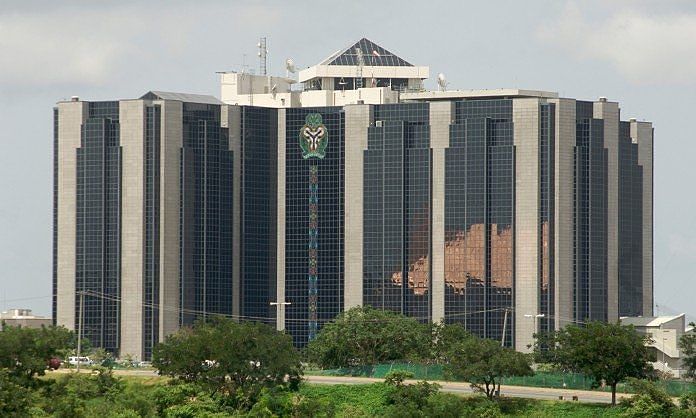Business
Cut Interest Rate Further – Economists Tell CBN

Economists have called on the Monetary Policy Committee of the Central Bank of Nigeria to significantly cut interest rates to drive economic growth and provide a conducive environment for businesses to thrive.
They made the call while reacting to the recent reduction in interest rates by 50 basis points from 27.5 per cent to 27 per cent by the CBN.
Daily Trust reports that the governor of the CBN, Olayemi Cardoso while briefing the media on the outcome of the 302nd MPC meeting in Abuja stated that the rate cut was premised on the recent easing of inflation as announced by the National Bureau of Statistics (NBS).
What experts are saying
Speaking on the issue, a renowned Economists and Professor of Capital Markets, Uche Uwaleke noted that the reduction was too small to make an impact
“The half a percentage cut in Monetary Policy Rates is only tantamount to a slap on the wrist. I expect the markets to interpret the 50 basis points cut in the MPR as a signal to the future path of interest rates.
“This signalling property will be leveraged by portfolio managers as they rebalance their portfolios and pivot to equities,” he said.
Speaking on the adjustment of the Cash Reserve Ratio, Uwaleke who is a member of Daily Trust Board of Economists noted that “the CRR for commercial banks was actually reduced from 50% to 45%, akin together with the narrowing of the MPR corridor from -100/+500 to a symmetric corridor of +250/-250 is a welcome development expected to support economic growth,”
Also contributing, Dr. Rislanudeen Muhammad, another Daily Trust’s in-house economist, noted that the MPC decision is a significant departure from its persistent stance of raising rates to attack inflation.
His words: “Note that inflation is still a significant challenge to the Nigerian economy. The policy shift, albeit minimal, signals the intent of monetary policy to synchronize with fiscal policy especially on the specific target of supporting growth via lower cost of borrowing. However, this is the tip of an iceberg.
“The economy requires significant but consciously and transparently driven, quantitative easing to propel recovery of the manufacturing sector that is facing dearth of cost effective funds. I believe the committee is also careful not to distort the market by higher rate reduction and leading to higher liquidity, and pushing market rates going down faster than normal.
“This will end up disincentivizing foreign portfolio investments or the so called hot money which significantly contribute to the present foreign exchange market stability,” he explained
Also speaking, Dr. Hassan Mahmud, another Daily Trust economist noted that the cut may not necessarily bring succor to businesses who are intending to borrow.
“The interest rate cut by the CBN is merely a signaling move to indicate a normalization of the tightening episode, however, a 50 basis point reduction in MPC would not necessarily translate to an increase in credit growth or an immediate reduction in lending rate by banks.
“There are several other factors that determine the cost of funds to banks which determine their lending rate, MPC is just one of them. With the persistent level of excess liquidity within the system, which is also depressing TB rates, it is somehow contradictory that the CBN is cutting rates now, and simultaneously increasing CRR to 75% – it is like taking with the right hand and collecting back with the left hand = net zero effect.
Breaking down the MPC decision further, Dr. Hassan noted that “The CBN had to cut rates in response to market sentiment and fiscal pressures- indicating a support to GDP growth and a forward guidance that inflation is likely to trend further downward in subsequent months- this may influence market behaviour and enabled the CBN to anchor inflation expectations better – ceteris paribus.
He however advised that “the fiscal side would also need to be more targeted in its fiscal spending and imbibe a culture of strict fiscal prudence, particularly given the recent implementation of the new tax measures, which would require accountability and transparency on the part of the fiscal authority/govt,”
Similarly, a development expert and former permanent secretary at the Ministry of Finance, Aliyu Ahmed reiterated the need to sustain the downward inflation trajectory, while calling on the fiscal authority to ensure that liquidity is contained in the system in the midst of recent increase in FAAC allocation.
“The moderate decline is coming in the face of consistent monthly increases in FAAC distribution in the last 18 months. The fiscal authorities through the instrumentality of NEC should prevail on the sub-nationals on the imperative to rebuild buffers from improved revenue flows to sterilize some of the flows as well as serve as fall back at times of difficulties/emergency. These buffers existed in the past and they need to be rebuilt.
“Furthermore, with the announcement by the DG Budget Office of the Federation that capital budget for FY 25 will commence in September 2025, the monetary authorities must coordinate appropriately with the fiscal to ensure that the liquidity arising therefrom will be appropriately managed so as not to undermine the disinflation objective of the monetary policy,” he added
First interest rates cut in 5yrs
Meanwhile, checks by Daily Trust show that the monetary policy committee (MPC) of the Central Bank of Nigeria (CBN) reduction of the monetary policy rate (MPR) from 27.5 percent to 27 percent is the first time in five years
Olayemi Cardoso, CBN’s governor, who announced the rate adjustment at the 302nd MPC meeting in Abuja said the decision was premised on the recent moderation in inflation
The MPR is the baseline interest rate in an economy while other interest rates used within the economy are built on it.
The MPC’s decision comes after Nigeria’s inflation rate dropped to 20.33 percent in August 2025.
It represents the first interest rate reduction since 2020, when it was cut to 11.5 percent by the erstwhile CBN governor, Godwin Emefiele and also marks the first rate cut since the current CBN administration began.
Speaking at the media briefing, Cardoso said the committee members unanimously voted to reduce the rate by 50 basis points from 27.5 percent to 27 percent.
He said the committee adjusted the cash reserve ratio (CRR) to 45 percent, and retained the liquidity ratio at 30 percent.
“All 12 members of the committee were in support of the decisions of the MPC. The committee decided to reduce the monetary policy rate (MPR) by 50 basis points to 27 per cent,” the CBN governor said.
“Change the asymmetric corridor to +250/-250 around the MPR, reduce the CRR of commercial banks from 50% to 45%.
“The CRR of Merchant banks remains at 16 percent and also to introduce a 75 percent CRR on non-TSA public sector departments and keep the liquidity ratio unchanged at 30 percent.”
The CBN governor also said the committee’s decision to lower the MPR was predicated on the sustained disinflation recorded in the past five months, projections of declining inflation for the rest of 2025, and the need to support economic recovery efforts.
“The MPC expressed satisfaction with the prevailing macroeconomic stability, evidenced by the improvements in several indicators,” Cardoso said.
“These include the sustained disinflation, improved output growth, stable exchange rate and robust external reserves.
“It particularly noted the increased momentum of disinflation in August 2025 being the highest in the past five months.”
“This deceleration underpinned by monetary policy tightening, exchange rate stability, increased capital inflows and surplus current account balance have helped to broadly anchor inflation expectations.”
Other factors that contributed to the deceleration, according to Cardoso, include the continued moderation in the price of petrol and the notable increase in crude oil production.
Citing the submissions of the committee, the CBN governor said the stability in the macroeconomic environment offered some headroom for monetary policy to support economic growth and recovery.
Excess liquidity in circulation
Speaking further, Cardoso noted that “Notwithstanding the consistent deceleration in inflation, the committee observed the persistent build-up of excess liquidity in the banking system, resulting largely from fiscal releases emerging from improved revenues,” he said.
The CBN governor also said the committee will remain proactive through a data-driven policy response for the continued stability of the macroeconomic environment.
He announced that the next meeting of the committee is scheduled for November 24 and November 25, 2025.
Efforts to improve access to fx underway
Reflecting on the two years he has spent as CBN governor, Cardoso noted that the Bank has led some reforms, adding that efforts are in place to improve access to foreign exchange.
“I must tell you that one of the things you can expect from us going forward is improving the whole issue of ease of access to foreign exchange for everybody,” he said.
“And for example, I give you the example that I know has positively impacted so many and that is the whole issue of access to foreign exchange. Now when you travel, you can use your naira card.
“And this is not a joke. It works. The banks have all on the back of the positive reforms, come out and are bringing out new products and ensuring that they get to their customers.”
According to the CBN governor, the stability brought about by the Bank’s reforms will be sustained.
What MPC decisions mean for Nigerians
Analysis by Daily Trust further showed that with the easing of monetary policy rates and reduction in the Cash Reserve Ratio for commercial banks from 50 per cent to 45 percent, it will expand banks’ capacity to grant credit to businesses, lowering lending rates and making financing more accessible to Nigerians
In the same vein, the MPC decision means lower cost of borrowing while encouraging new investments, supporting business expansion, and enhancing capacity utilization in the real sector which can stimulate output growth and job creation.
Also a more accommodative monetary environment will enable banks to fulfill their core function of mobilizing savings and channeling them into productive investments, reinforcing financial deepening and economic growth.
Also, the decision to impose a 75 percent CRR on non-TSA public sector deposits serves as a measure to prevent excessive fiscal-driven liquidity injections from destabilizing the financial system. (Daily trust)
-

 News10 hours ago
News10 hours agoNewswatch co-founder Dan Agbese is dead
-

 News17 hours ago
News17 hours agoLekki-Ajah road rehabilitation: Lagos to open Coastal road and other alternative routes
-

 News11 hours ago
News11 hours agoAlleged Assassination Attempt on Yerima: Military deploys personnel, 8 patrol vehicles to Gado Nasko Road
-

 News14 hours ago
News14 hours agoNegotiation With Bandits: ‘I Acted With Approval’ – Gumi Replies Critics
-

 News9 hours ago
News9 hours agoBREAKING: Nigeria’s Inflation Drops to 16.05% in October — NBS
-

 News11 hours ago
News11 hours agoPolice confirm Kebbi school invasion, give fresh details
-

 Metro10 hours ago
Metro10 hours agoONBOARD ALTERCATION: United Nigeria hands over VeryDarkman, Mr Jollof to security
-

 Business16 hours ago
Business16 hours agoNearly $3bn spent on Eurobond debt servicing under Tinubu
